
Chateaus & Castles Cont.

Chateau de Chambord
* Château de Chambord
Built in a rather desolate plain and surrounded by hunting forests, Chambord is a prestigious castle, that was hardly ever inhabited. Commissionned by King François Ier in 1519, it was in construction until the death of the king to end only under King Henri II. Francois Ier was at first impatient, but lost interest rather quickly. Towards the end of the reign, he came very little to Chambord. Perhaps he found – the castle old-fashioned. The principal masons engaged for the realization of the castle are Jacques Sourdeau, one of the builders of Blois, Pierre Trinqueau, who seems to have preserved until his death, in 1538, the direction of the work, and Jacques Coqueau. Several drawings of the building were established before the start of construction. A wooden model was executed by Dominique de Cortone and it is thought that Leonardo da Vinci, during the last years of his life spent in the Loire Valley, intervened in the development of Chambord's plans. Chambord today is the most famous Loire castle.
* Chateau de Chenonceau
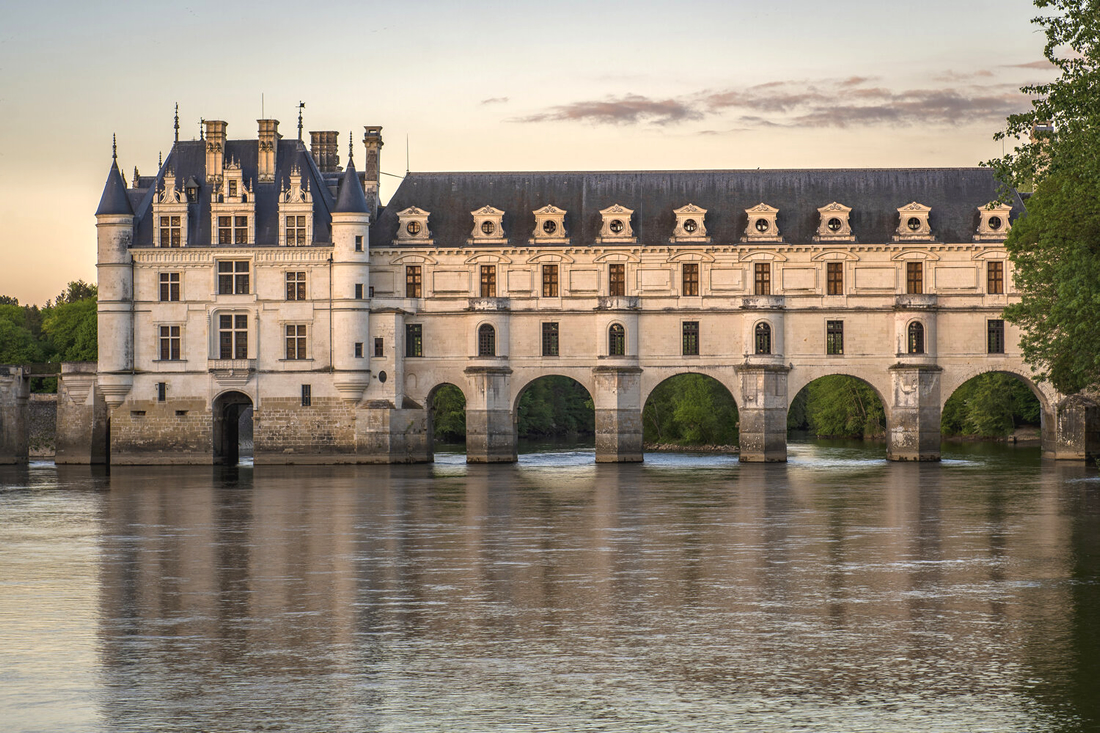
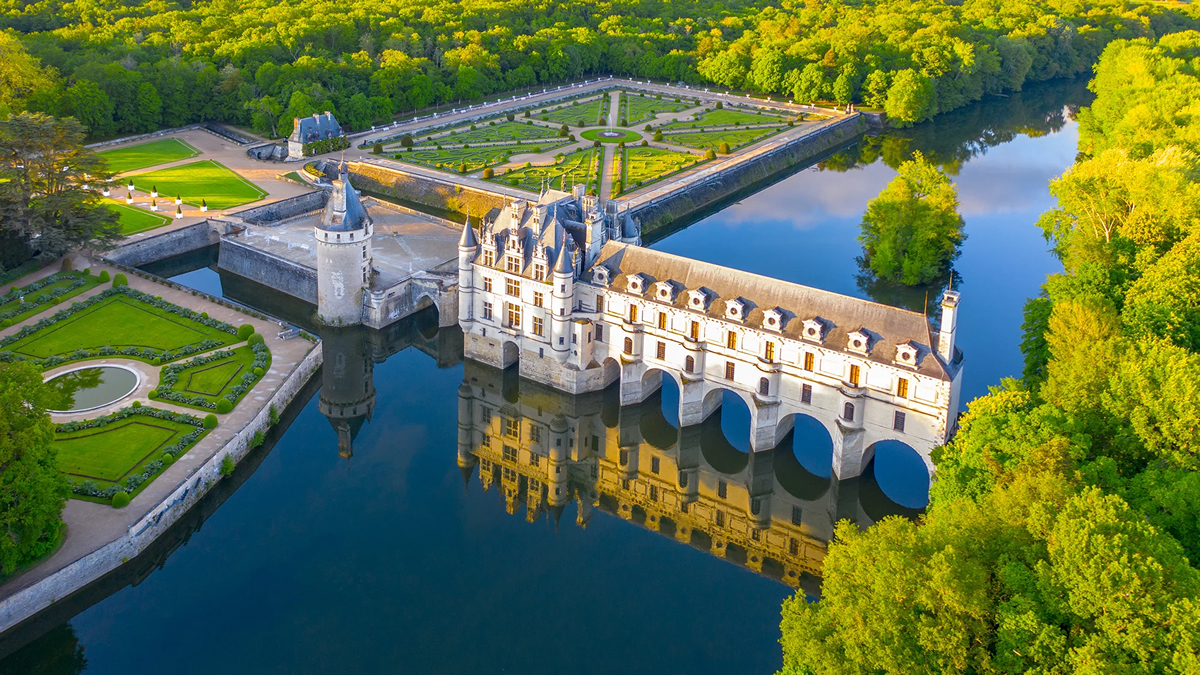
Chateau de Chenonceau is the most visited and photographed chateau of the Loire Valley in France. It is often described as ‘the ladies chateau’ as throughout its history it is they who have most influenced its design and its destiny...it was not always the chateau we see today.
Thomas Bohier, in 1512, acquired what was a small fortress by the river Cher and decided to replace it with a 'Renaissance' style chateau leaving only the keep from the original building.
It was his wife Katherine Briconnet who oversaw its build as her husband spent a lot of time away at war and she has left a great legacy. The chateau was later held over to the monarchy to pay-off debts and used by them to stage hunts and festivals.
Henri II gave it to his mistress Diane de Poitiers it was she who added the bridge over the Cher as well as the gardens.
When Henri died, the Queen, Catherine de Medici, forced Diane out of Chenonceau (to Chateau de Chaumont), even though by then she was its legitimate owner. Catherine proceeded to build the gallery and grand ballroom on Diane’s bridge which finally gave Chenonceau its now iconic look.
Diane would in fact refuse to live at Chaumont and the "Eternally Beautiful" lady of Chenonceau would finish her days in the nearby castle of Anet.
* Chateau de Cheverny
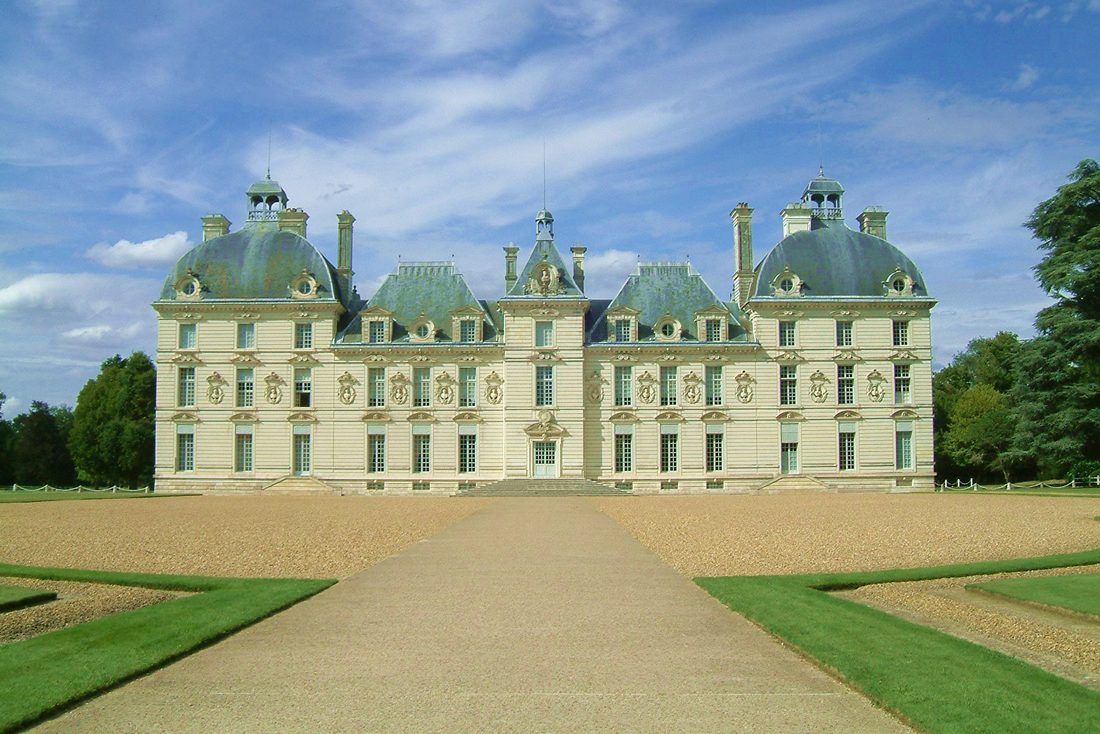
Chateau de Cheverny is a rare thing within the Loire Valley - a chateau that appears untouched by the Renaissance. This could have a lot to do with the fact that it has remained in the same family, the Huraults, for six centuries. Built sometime between 1604 and 1635,depending on whose account you read, the 17th century chateau is built in pure Louis XIII classical style with a rigid symmetry. The look is softened by the architect’s use of different roof styles from bell towers to domes.
The chateau you see today is as it was originally built and the feeling of stepping back in time is only enhanced by a visit inside where it is impressively decorated and furnished. As with many of the Loire chateaux ladies played a major part in its construction and decoration with Marguerite Gaillard (Mrs Huraults ) directing the build and her daughter completing the decoration. The furniture of the 'private' apartments of Chateau de Cheverny incorporate designs, celebrating the Egyptian campaigns of Napoleon Bonaparte.
The chateau is still owned by descendents of the original builders, the Hurault family and has retained an intimate charm. The interior reflects a living history of the generations of the family. The largest room, The Arms Room contains weapons, tapestry, chests, trunks and a carved wood chimney piece painted by Jean Monier in the 17th century. There are priceless tapestries all through the chateau as well as paintings and rare furnishings. There is an orangey within the grounds that was used during the second world war as a safe haven for many works of art from the Louvre in Paris, including the Mona Lisa.
* Château de Blois
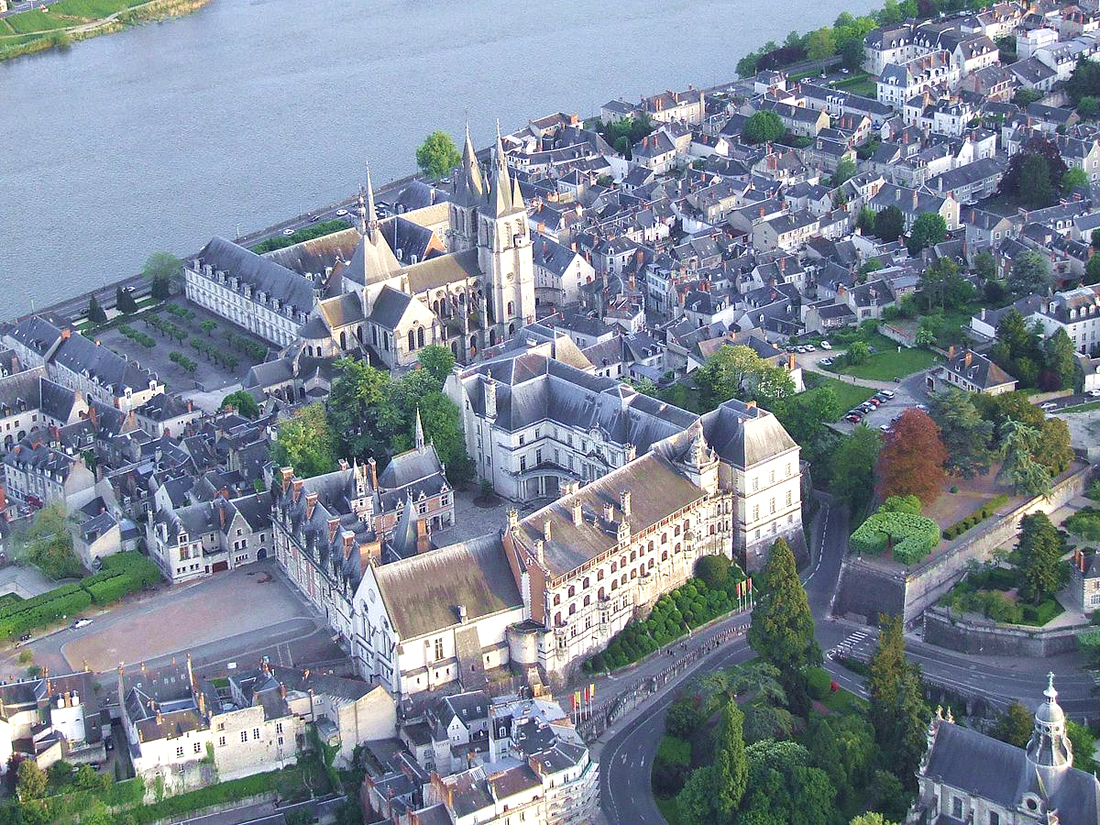
The Chateau of Blois is not only one of the most prestigious Renaissance monuments in France but also a brilliant illustration of the evolution of the French architecture from the Middle Ages to the 17th century. It has a great royal history from Louis XII who built the oldest part of the chateau to Francois I who added the renaissance wing with the unique open circular staircase. Official residence of the Kings of France during the Renaissance, it was a capital place of the history of France, in particular during the wars of Religion.
The first castle was built in the Middle Ages. It was in 1500 that began the work undertaken by King Louis XII. The castle became the official residence of the royal family. The successor of Louis XII, François Ier, his cousin, rebuild the castle The last part that was built was done by Gaston of Orleans, the last great prince in the 17th century. The medieval castle became a royal residence and the political capital of the kingdom under Louis XII. At the beginning of the 1500’s, the king initiated a reconstruction of the castle and the creation of a renaissance garden. These were later lost with the formation of Avenue Victor Hugo.
The first site of the 'Stateroom',the first room of your visit, almost takes your breath away, dating from 1214 its two naves separated by six columns are spectacularly ornate.This grand room was used by the counts of Blois as a courtroom.
The most complex castle of the Loire continues to attract 300,000 visitors each year.
* Chateau de Azay-le-Ferron
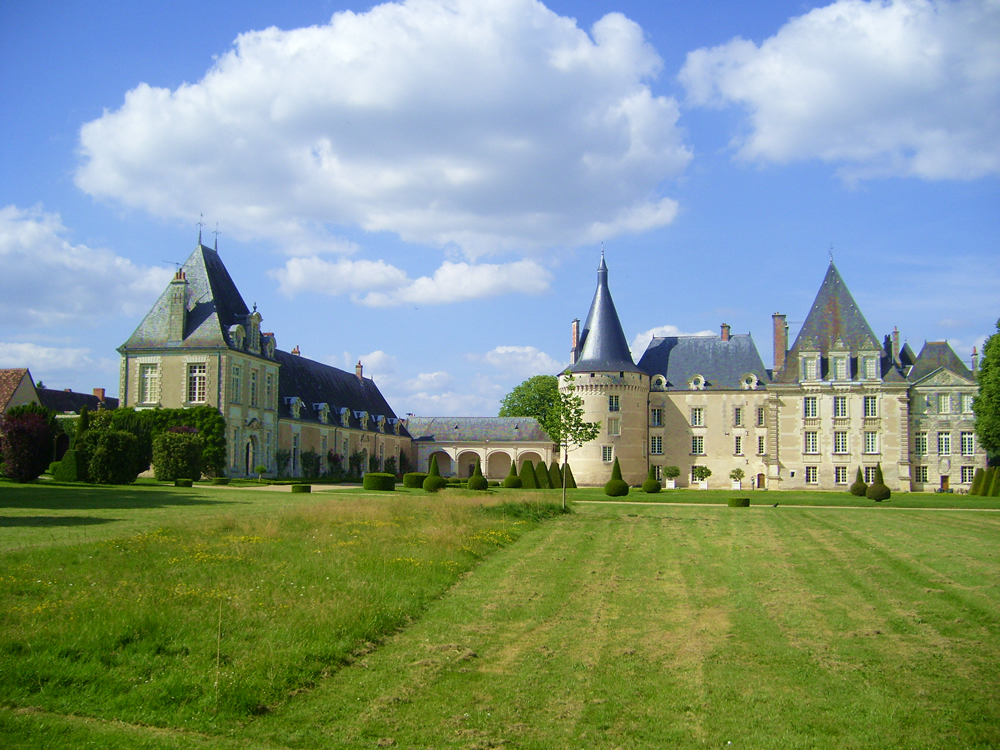
The chateau at Azay-le-Ferron is not one you will find on many 'must see' lists of Loire Valley chateaux but if you are visiting Southern Touraine you should include this exquisite building in your itinerary. Located in the department of Indre in France, in the village of the same name, the chateau's architecture is from the XV to the XVIII century. Visiting here is like travelling through history. From the outside you can observe the different influences on its build and design. Each owner has added something to this Chateau, a tower (built during the 15th century), a garden, an entire wing, or just internal corridors.
There are 18 rooms open to the public. Each of them sumptuously decorated from different periods. The visit takes you through the halls, kitchens, bedrooms, libraries and dining rooms. Children are prompted by the tour guide to discover secret doors that lead to secret passages joining the rooms.
Its interior evokes the life-style of a rich and comfortable rural residence where hunting parties and receptions were organized until the early 20th century. The history of the Chateau dates back to 1250 with the name of its first owner, Le Chevalier Banneret, Nicolas de Turpin de Crisse. The successive owners remained Barons until 1789. After that, the Chateau was bought by a businessman and later by a banker for Napoleon. In 1833, the Chateau was bought by the Luzarche family; master blacksmiths but they had to donate the Chateau to the city of Tours in 1951 because they had run out of inheritors.
The Chateau has 1000 Hectares of woods. There are around 20 hectares of gardens made up into various "styles", like the French style garden, the English style garden, the vegetable garden, the rose garden (with roses going back as far as the XIX century), topiaries, vineyards, orchards and so on.
* Chateau de Fougeres-sur-Bievre
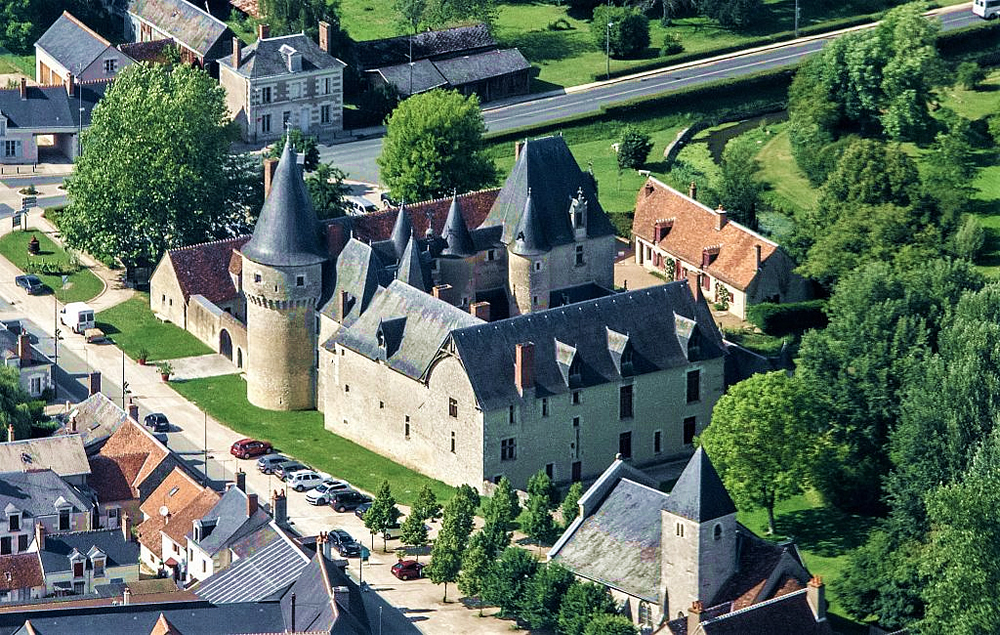
Chateau Fougeres-sur-Bievre is in the small but charming village of the same name which lies 10km southwest of Cheverny in the department of Loir-et-Cher. What you see today is castle that was rebuilt after its predecessor was destroyed during the Hundred Years War (l'englais again!) and judging by the structure it looks as if they were anticipating another! It was even better defended than you see today as it would have had a moat, now filled in and drawbridge. It is a veritable fortress, turned tightly in on its internal courtyard.
* Chateau de Brissac
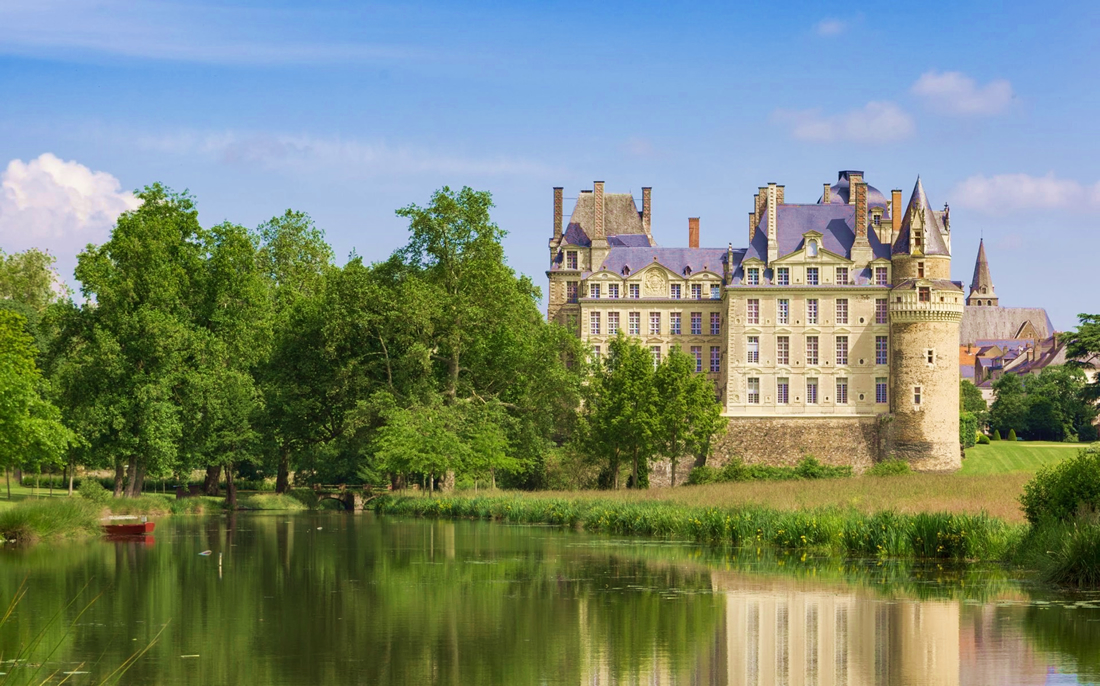
The Château Brissac, in the département of Maine-et-Loire, France, was originally built, like most of the Loire Valley chateau, as a fortified castle by the Counts of Anjou in the 11th century. After the victory over the English by King Philippe II of France, he gave the property to Guillaume des Roches.
In the 15th century, it was rebuilt by Pierre de Brézé, a wealthy chief minister to King Charles VII. During the reign (1515–1547) of King Francois I, the property was acquired by René de Cossé, who the king named as governor of Anjou and Maine.
During the French Wars of Religion, Chateau Brissac was severely damaged and the fortress was scheduled to be demolished. However, Charles II de Cossé sided with Henri of Navarre who was soon to be crowned King of France. In gratitude, King Henri gave him the property, the title Duc de Brissac and the money to rebuild the chateau in 1611. Its construction made it the highest chateau in France, its façade reflecting the influences of that century’s Baroque architecture.
Through marriage, the Cossé-Brissac family also acquired the Chateau Montreuil-Bellay but later sold it. The descendants of the Duc de Brissac maintained the chateau until 1792 when the property was ransacked during the Revolution. It lay in waste until a restoration program began in 1844 that was carried on during the 19th century by the Duke's descendants. Today, the Chateau Brissac is still owned by a de Cossé family member.
* Chateau de Saumur
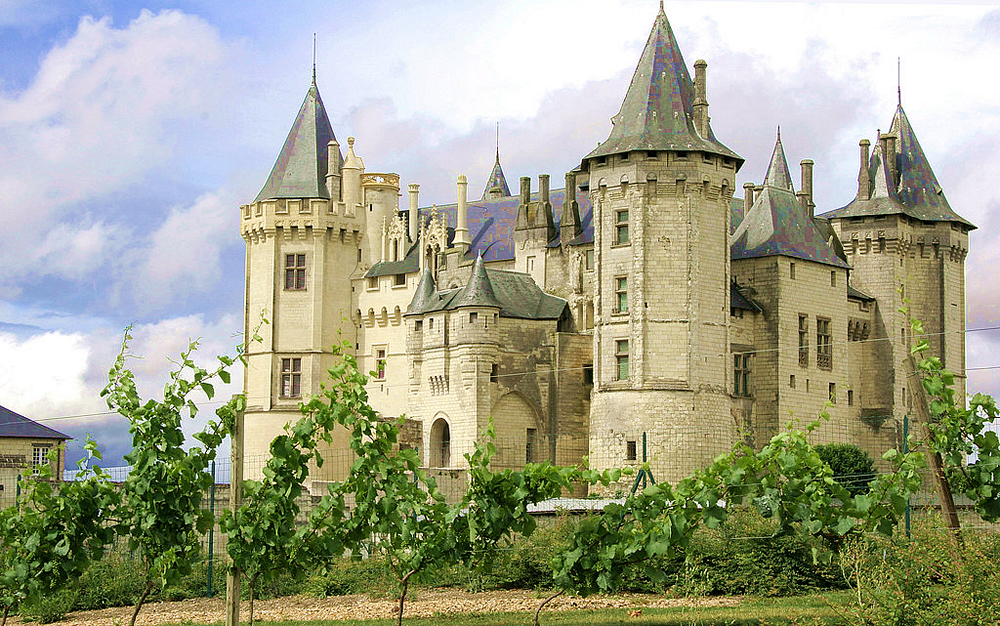
The chateau we see today originates from the 14th century but it was in the 15th that it was made into a comfortable residence by Duke Rene d’ Anjou. During its long history it has been the governor’s house, a jail before the town purchased it in 1906 to restore and turn it into the tourist attraction it is today. The former royal apartments now house two museums – ‘Musee des Arts Decoratifs’ and Musee du Cheval’. The first houses European china and tapestries with the second located in the attic of the chateau being dedicated to equestrian pursuits where you are taken into a world of saddlery from across the world – all lovingly worked. There isn't a great deal on show in the rooms you get to see but there are 15th century tapestries and 18th century porcelain as well as period pieces of furniture.
* Chateau de Montreuil-Bellay
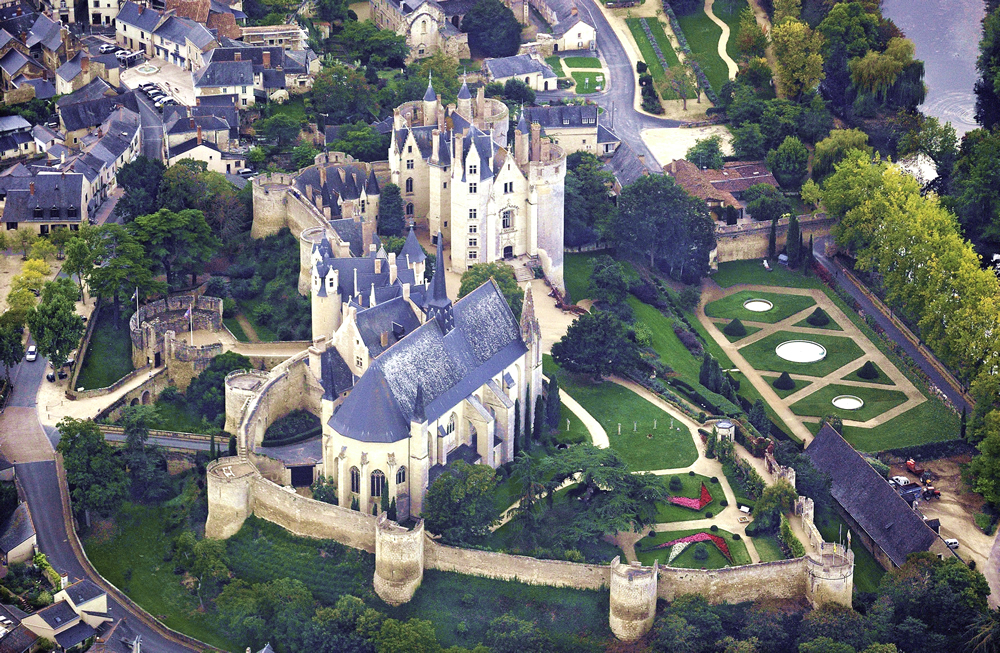
Chateau Montreuil-Bellay overlooking the river Thouet, can be found ten miles south of Saumur. There have fortifications on this site from the 11th century. The current chateaux is much younger than this, its fortified gateway leads to a 15th century house. which you can visit, with the ancient wine cellars the highlight. The chateau has lovely gardens overlooking the river and because of its lofty position it offers some great views.
The town of Montreuil-Bellay retains almost all of its medieval walls, making it one of the last fortified towns of the Anjou region. It is well worth a visit as it still retains its medieval feel. Its strategic location on the borders of Anjou, Touraine and Poitou allowed the town to grow and have an important regional administrative function (subsequently transferred to Saumur) before the French Revolution, this accounts for the number of fine houses in the town.
During the French Revolution the castle was seized by the revolutionary government and used as a prison for women suspected of being royalists. In 1860 the daughter of Saumur businessman Adrien Niveleau, (who had bought it in 1822) undertook occupancy and set about a major restoration campaign, redoing some of the rooms in the Troubadour style. Descendants of her husband's nephew are the current owners of the property.
Château Montreuil-Bellay is also the name of fine wines of the area produced from vines within the chateau grounds. The grapes, apparently harvested and sorted by hand, are made into wine in the fifteenth-century wine cellars.
* Chateau Montsoreau
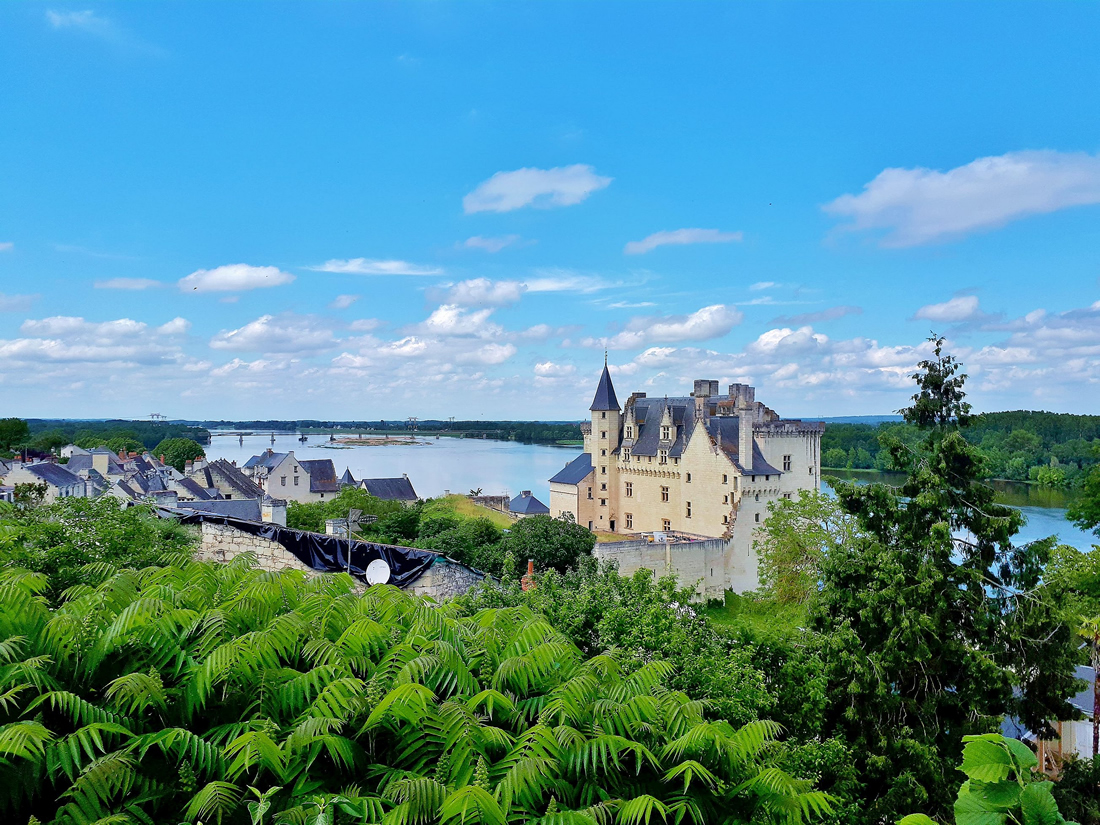
The chateau at Montsoreau's origins date back to the middle ages where because of its strategic position at the meeting of the rivers Loire and Vienne and at the crossroads of the historic regions of Anjou, Poitou and Touraine it became both a military stronghold and tollhouse. Later with its 'toe' touching the water -- the river originally filled its moats--it became one of the premier boating residences on the Loire.
The 15C castle was made famous by Alexandre Dumas’ novel "La Dame de Montsoreau". In 2016 the chateau was converted to host Philippe Méaille’s contemporary art collection on the first two levels of the castle. His collection brought together over twenty years, is one of the largest in the world on the theme of Conceptual Art.
* Chateau d'Oiron
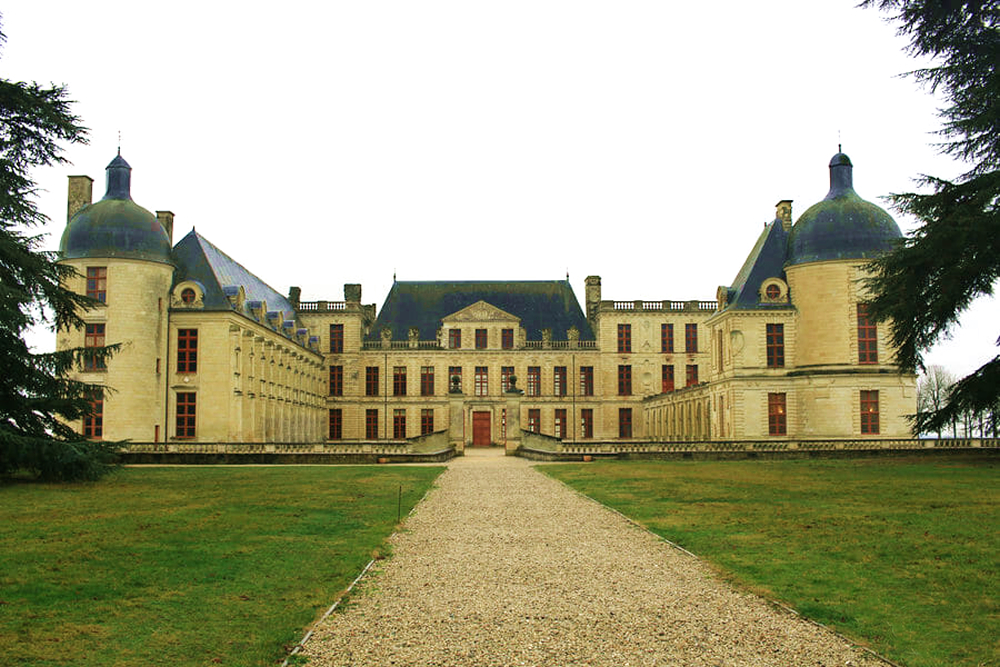
Building was begun in the sixteenth century by the Gouffier family who had been given the land by the king for their support during the Hundred Years War. It has been added to over the centuries to give us the chateau you see today. The bare chateau itself, devoid of any fixtures or furnishings, is worth a viewing alone but today it plays host to a permanent contemporary art collection that is displayed in such a way that the building itself becomes part of the exhibition. You will be impressed by the individual artist's work which is displayed in different rooms and halls of the chateau to best effect.
* Chateau de Beauregard
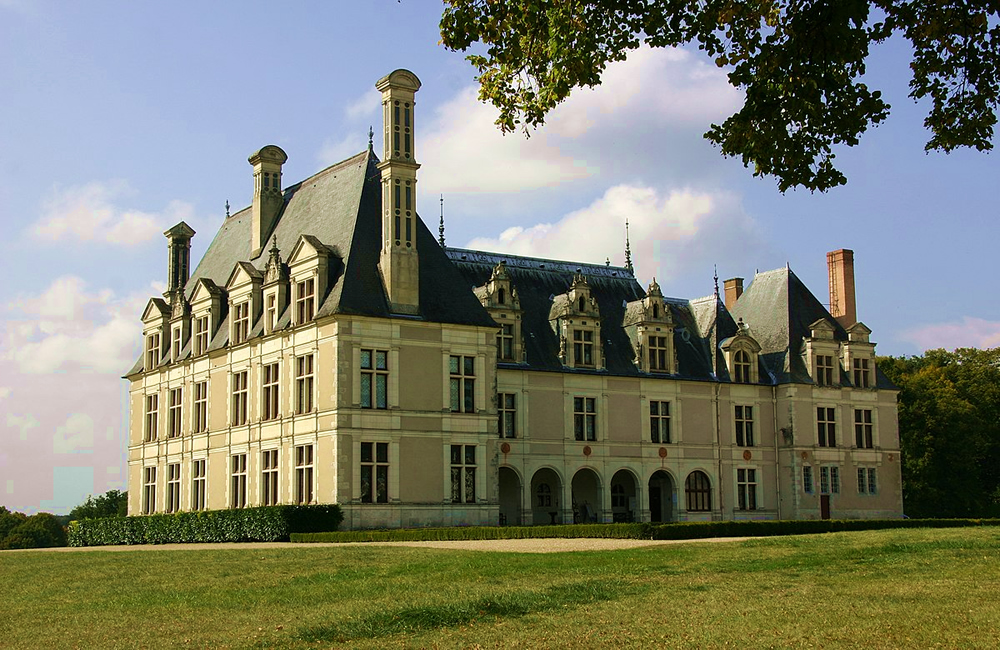
Chateau de Beauregard in Loir-et-Cher will not be many people's first choice of Loire Valley chateaux to visit and it actually took us some time to check it out ourselves. It can be found 3 miles southeast of Blois and within striking distance of both Chateau de Chambord and Chateau de Cheverny. The main attraction at Beauregard is the 17th century portrait gallery "Galerie des Illustres" a 26-meter long Renaissance room with over 300 portraits of distinguished Frenchmen and Europeans. It is impressive as a collection but you can only look at so many portraits.
* Chateau de La Guerche

Chateau de La Guerche sits proudly on the banks of the river Creuse. Dating from the 15th century it stands as a formidable fortress as if guarding the bridge and the village that grew up around it. Like many of the chateaux of the Loire Valley it has had a turbulent history and its survival is due mainly to the ancestors of the current owners who decided to make it their permanent home and set about its restoration.
* Chateau du Clos Luce
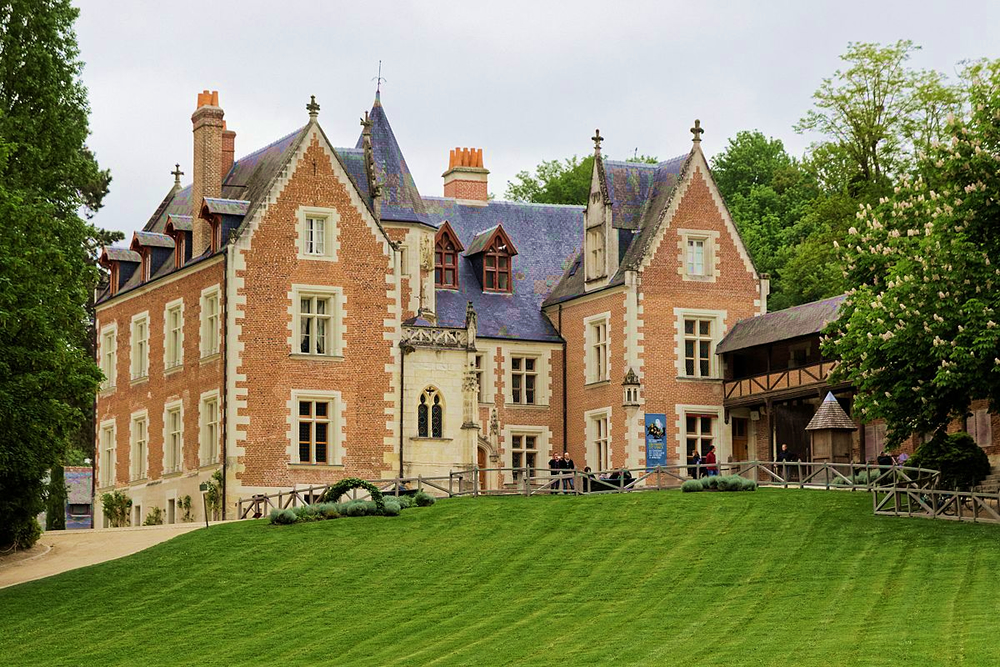
You cannot visit the town of Amboise and its impressive chateau without also visiting nearby Clos-luce, where you will learn, in a well presented indoor and outdoor exhibition, off the last years of Leonardo de Vinci (1516-1519) surprisingly spent here in Amboise in the Loire Valley. Shortly after his patron Giuliano died in 1516, Leonardo had been enticed here by the arts loving Francois I with the promise of a pension and comfortable residence. Few demands were put on him other than to be available for intellectual conversation, otherwise he was ”free to think, dream and work”. Leonardo had crossed the Alps on a mule carrying with him some of his precious artwork including the Mona Lisa – which explains why it hangs in Paris and not Rome.
The site of the manor house dates back to the 12th century when it was surrounded by fortifications of which only the watchtower remains. The house as it is today, a good example of Renaissance art using both brick and the local tufa stone, was built in the late 1400’s and had various owners before Charles VIII bought it and turned it into a royal residence, perhaps for his and future king’s mistresses. After being saved from the Revolution by the Amboise family Clos Luce went through a period of stability where its only enemies were the passing years. Major restoration works started in the 1960’s to return it to the condition it would have been in during Leonardo’s time there, returning the interior to its Renaissance style. François I enjoyed the company of Leonardo so much that he had a tunnel built between the Château d’Amboise and the Château du Clos Lucé so he might visit easily and discreetly. The entrance to the tunnel can be seen in the current ‘model room’ of the Clos Lucé.
* Chateau d'Usse
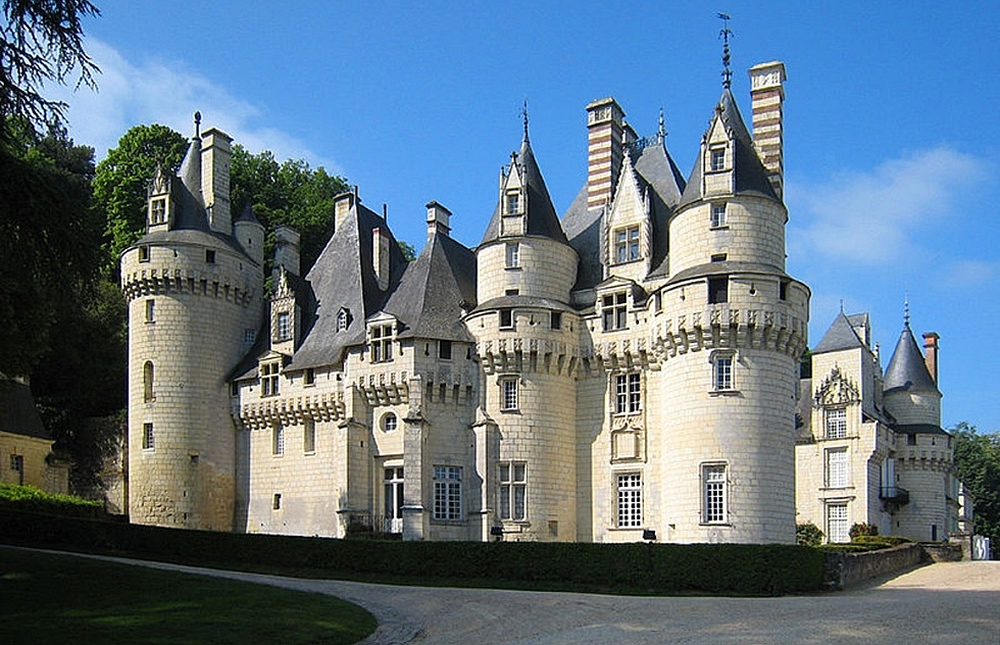
Like many of the other Valley chateaux, Usse was built on the foundations of a small fortress but has had a very tranquil history. Perhaps its location at the edge of the forest of Chinon has something to do with this.The castle of Usse was built for the Buiel family in the second half of the 15th century. The family had distinguished itself in the 'Hundred Years War' and was seeking a home befitting there new rank in society. The family did not stay long however for Antoine De Buiel, the husband of Louis VI daughter, sold the castle in 1485 to Charles who set about making many improvements and is known for having the famous chapel built on the grounds. They served as chamberlains to many of the royalty and kings of their time. This castle has changed hands many times over the years. 1885 the Count de Blacas bought the chateau and his descendants still live and make a home there today. The Marquis de Blacas who is the grandson of the man who began the Egyptian Department at the Louvre, currently resides there.
* Chateau du Rivau
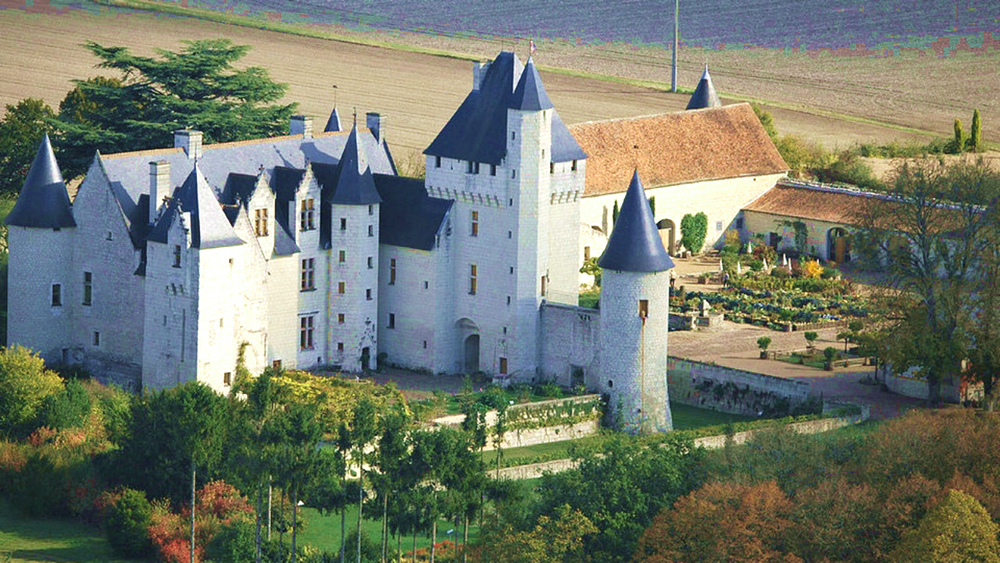
Château du Rivau may not be the first to come to mind when thinking of the great chateaux of the Loire Valley but it really is worth adding to your itinerary. Its history is intimately linked to the Beauvau family who were related to the Counts of Anjou and fought under their banner. In the 13th century the family went on to serve the kings of France and in 1454 were allied directly to the royal family through the marriage of Jean II de Bourbon to Isabeau de Beauvau. Many members of the Beauvau family have, over the centuries, given their lives for France.
In 1429, before the siege of Orleans, Joan of Arc and her followers came to fetch horses at Rivau, a place renowned for the quality of its ‘war’ horse breeding and training. The chateau was fortified in the mid 15th century but was modified to be the chateau you see today during the Renaissance. There is a room dedicated to 'Joan' within the castle.
Rivau was saved in the 17th century by Richelieu as his sister Françoise was married to Jean de Beauvau, lord of Rivau, it had remained in his family for nearly 250 years before being acquired by marquis Michel-Ange de Castellane, lord of Villandry, he stayed here with his family until 1796.
Like a lot of Loire chateaux however, it went into decline until it received a ten year restoration programme, starting in 1992, to return some of its historical splendour.
The monumental stables in the outbuildings, that supplied royal stallions were constructed in 1510 by Francois de Beauvau, a captain of Francois I.
* Chateau de Langeais
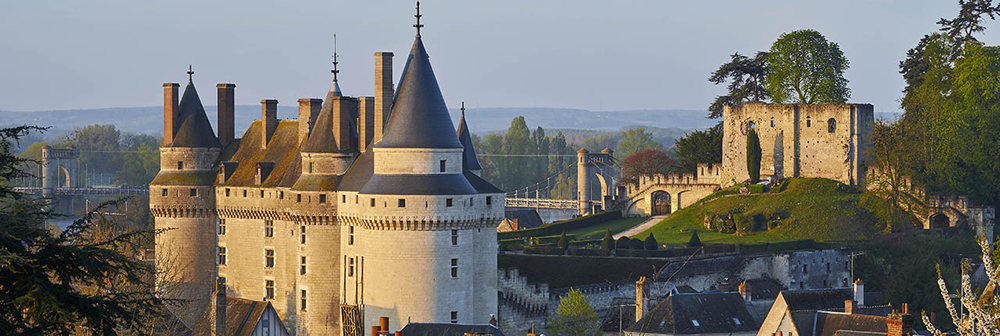
While the outside of the building is strong and fortress-like, the internal facade is more influenced by the Renaissance giving it more of an appearance of the traditional chateau. A great deal is made of the fact that the fortress was built in double quick time – between 1465 and 1469 – (hire these builders!) which, when you are face to face with it, is a remarkable achievement. In 1491 Chateau de Langeais was chosen as the venue for the marriage of Charles VIII and the 14 year old Duchess Anne de Bretagne, which brought Brittany into the Kingdom of France.
The majority of restoration work to the chateau was undertaken by Jacques Siegfried who has added many fine examples of 15th century furniture and tapestries to help return the interior to something like its earlier splendour. He bequeathed it to the Institute of France in 1904 and they remain its current guardian. A keep dating back to 1000AD, built by Faulk (Foulques) Nerra, a former count of Anjou – which is unusual as although most of the chateaux of the region were built on former fortress sites, few have any remains of the original buildings.
* Chateau de Loches
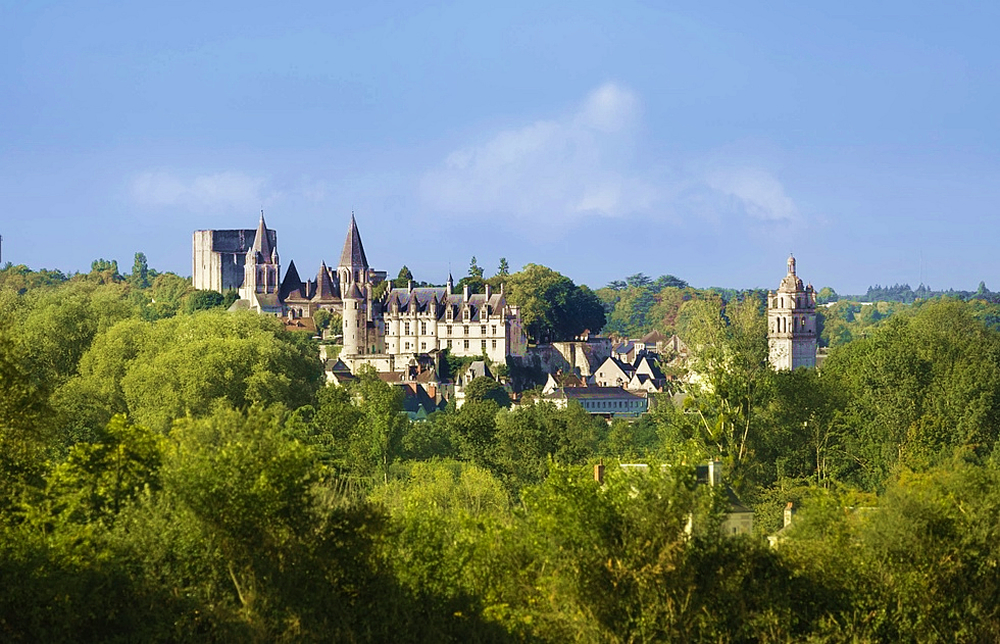
The medieval castle of Loches is unique in that whereas most Loire Valley Chateaux are built on the sites of former fortresses with little remaining of the original fortress, here you have a citadel town that has both the remains of the fortress, built again by our old friend Foulques Nerra Count of Anjou (busy man!) in the 11th century and its 14th and 16th century Royal Lodgings both well enough preserved to give a good idea as to how the site was used through the centuries.
The chateau or 'Royal lodgings' sit really well into the landscape of this medieval town - it was after all where it all began. There has been a fortification on this site since the Romans built the first one in the third century. Situated to the north of the citadel, the least exposed to attacks, it was used as the residence of the King and his court when they were passing through the town or staying clear of their enemies in and around Paris. It and the rest of the fortified complex can be accessed via the 'Porte Royale' gate on the western ramparts. Two buildings dating from different periods sit side by side, the south-east part was built in the 16th century onto the existing 14th century building. Its built-in turrets and its machicolations are reminiscent of military architecture. Two buildings dating from different periods sit side by side, the south-east part was built in the 16th century onto the existing 14th century building. Its built-in turrets and its machicolations are reminiscent of military architecture.
* Chateau de Montresor
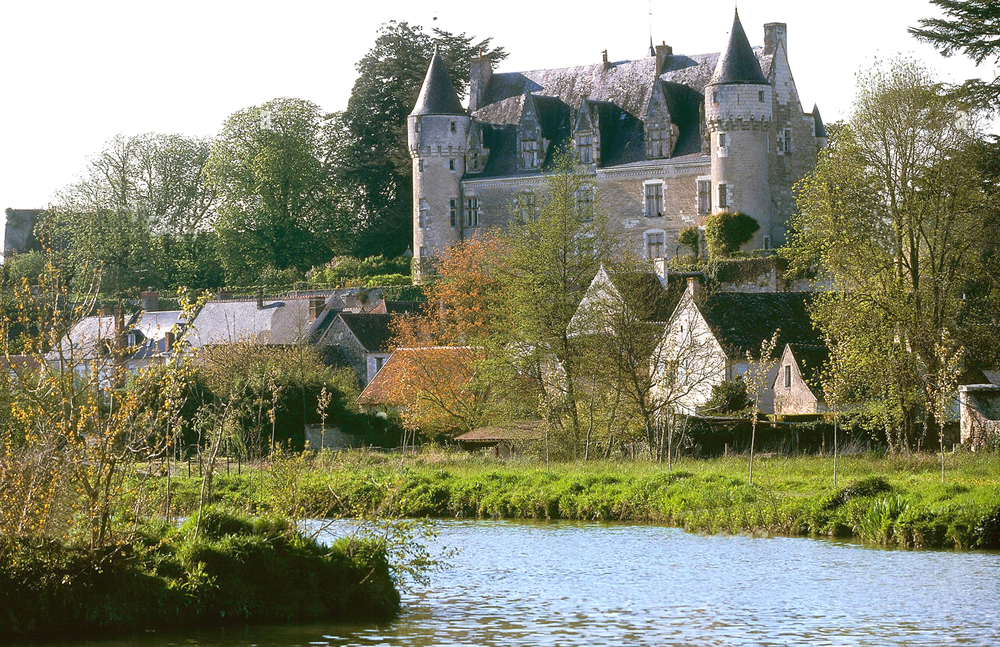
At the start of the 11th century, Foulques Nerra who was responsible for many of the medieval fortresses of the Loire Valley, had one built on top of a rocky promontory overlooking the Indrois Valley as a defence against potential invaders. A double enclosure wall surrounding the keep is still apparent. The massive corner towers and the 12th century gate towers remain impressive because of their powerful feudal architecture designed for defensive purposes. The chateau passed into the hands of the Bastarnay family in 1493. They had a fine residence built within the fortress walls and also founded the collegiate church.It became a charming peacetime residence surrounded by the original feudal defence system. Over time it past into the ownership of the Beauvilliers family where it remained for over a century until 1831.
In 1849, Xavier Branicki,a Polish count who had developed a friendship with Napoléon III, acquired the château. Army officer, politician and financier, he was one of the founders of the Crédit Foncier de France bank in 1852. A noteworthy art collector and patron, the count decorated the château with many valuable pieces of furniture, paintings and art objects. He was also the one who donated paintings to the collegiate church that had originally been part of the collection of Cardinal Fesch, the uncle of Napoléon. The castle still belongs to the descendants of Count Branicki today.
* Chateau de Breze
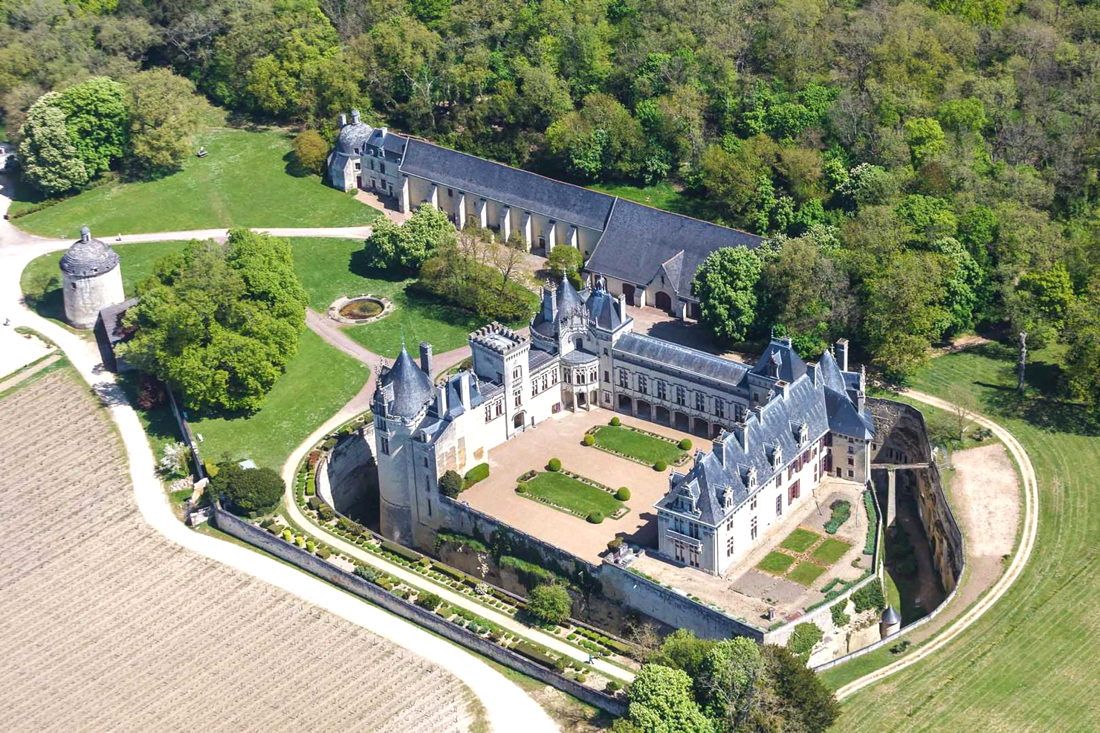
The current structure is Renaissance in style yet retains medieval elements. Today, it is the residence of descendants of the ancient lords. The château has been a listed ancient monument since 1960. Once you start to cross into the chateau itself it is only then you catch a glimpse of what lies ahead. The chateau you first catch site of is in fact built over a complex 'second chateau' carved out of the rock foundations. All the excavations and underground work was apparently to provide a safe haven from marauding invaders but ironically during it's long history the chateau was never attacked!
* Chateau de Valencay
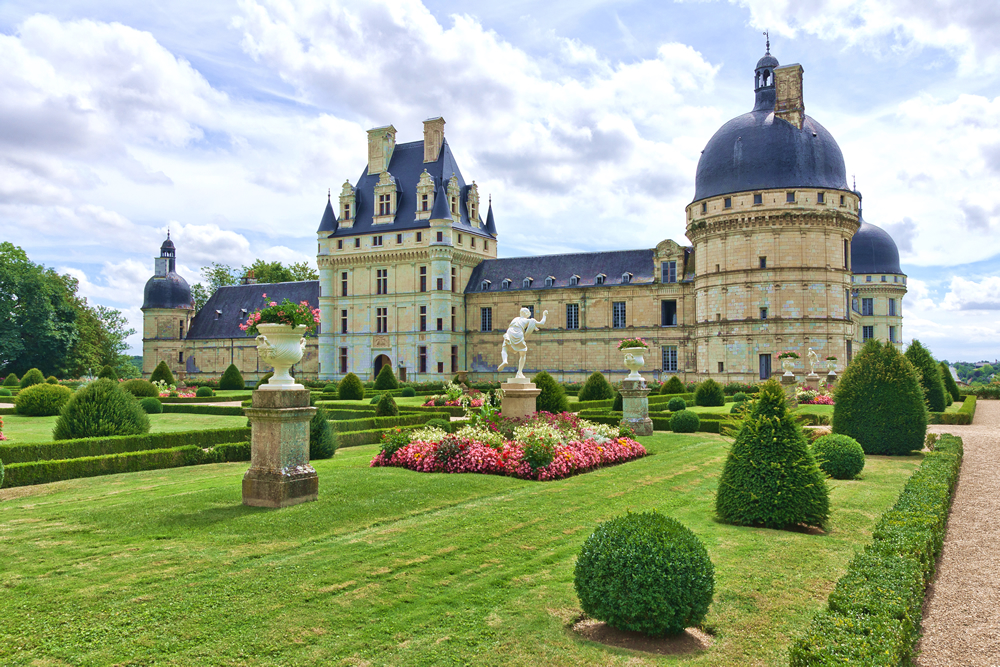
The Chateau at Valencay, built in 1540 by Jacuqes d’Estampes to show of his new found wealth (he married money!), is worth a visit. Although geographically it is in the department of Indre, its style bears heavy comparisons with the best of the Loire Valley Renaissance chateaux and as such it is normally included in many of the Chateaux tour packages. Inside the chateau is furnished with elaborately embroidered chairs, ornate tables, delicate chandeliers, fussy clocks, Chinese vases, with a touch of Egyptian style thrown in for good measure. It is as it would have been for its most illustrious owner the Prince de Tallyrand, Napoleon’s foreign minister, to do his lavish entertaining of his many guests and mistresses.
It has had a number of owners throughout the centuries, including a Scottish banker, John Law but none so memorable as de Tallyrand, to whom there is a museum dedicated within the grounds. George Sand said of the gardens of the chateau that “No king has a more picturesque park”.
* Chateau de Gue-Pean
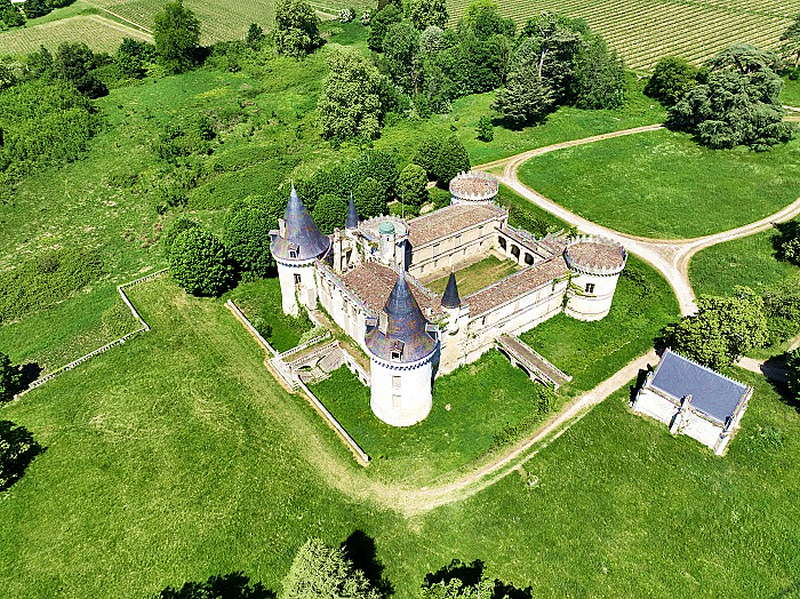
Gue-Pean is built on a the former site of a Roman camp later to become a Middle-age stronghold before its rise as the building you see today -- this like many others had to rebuilt after the 'Hundred Years War'. Rumour has it that this is where King Francois I and Mary Queen of Scots would have their clandestine meetings.
Chateaux Page 5.
Home ..The Chateau ..History ..Climate...Getting There ..B&B ..Gites ..Backpackers...Showroom ..Weddings . Festivals ..The Loire ..Chateaux
Sightseeing...France ..Vaas ..Tours ..Angers ..Blois ..Orleans ..Le Mans ..Brittany ..Normandy...Loire Wines ..Delicacies ..French Food
Activities . Nature...Bird Watching..,Roses...Furniture...Persian Art.. Ceramics...Tapestries...Costing/Booking...Contact
_________________________________________________________________________________________Copyright © March 2022__________________________________________________________________________________________________